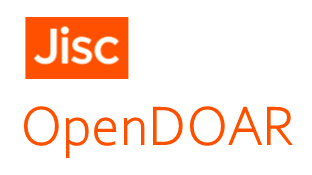Artículo
 Dormant intracellular salmonella enterica serovar typhimurium discriminates among salmonella pathogenicity island 2 effectors to persist inside fibroblasts
Dormant intracellular salmonella enterica serovar typhimurium discriminates among salmonella pathogenicity island 2 effectors to persist inside fibroblasts
| Autor/es | Núñez Hernández, Cristina
Alonso, Ana Pucciarelli, María Graciela Casadesús Pursals, Josep García del Portillo, Francisco |
| Departamento | Universidad de Sevilla. Departamento de Genética |
| Fecha de publicación | 2014-01 |
| Fecha de depósito | 2017-07-18 |
| Publicado en |
|
| Resumen | Salmonella enterica uses effector proteins delivered by type III secretion systems (TTSS) to colonize eukaryotic cells. Recent in vivo studies have shown that intracellular bacteria activate the TTSS encoded by Salmonella ... Salmonella enterica uses effector proteins delivered by type III secretion systems (TTSS) to colonize eukaryotic cells. Recent in vivo studies have shown that intracellular bacteria activate the TTSS encoded by Salmonella pathogenicity island-2 (SPI-2) to restrain growth inside phagocytes. Growth attenuation is also observed in vivo in bacteria colonizing nonphagocytic stromal cells of the intestinal lamina propria and in cultured fibroblasts. SPI-2 is required for survival of nongrowing bacteria persisting inside fibroblasts, but its induction mode and the effectors involved remain unknown. Here, we show that nongrowing dormant intracellular bacteria use the two-component system OmpR-EnvZ to induce SPI-2 expression and the PhoP-PhoQ system to regulate the time at which induction takes place, 2 h postentry. Dormant bacteria were shown to discriminate the usage of SPI-2 effectors. Among the effectors tested, SseF, SseG, and SseJ were required for survival, while others, such as SifA and SifB, were not. SifA and SifB dispensability correlated with the inability of intracellular bacteria to secrete these effectors even when overexpressed. Conversely, SseJ overproduction resulted in augmented secretion and exacerbated bacterial growth. Dormant bacteria produced other effectors, such as PipB and PipB2, that, unlike what was reported for epithelial cells, did not to traffic outside the phagosomal compartment. Therefore, permissiveness for secreting only a subset of SPI-2 effectors may be instrumental for dormancy. We propose that the S. enterica serovar Typhimurium nonproliferative intracellular lifestyle is sustained by selection of SPI-2 effectors that are produced in tightly defined amounts and delivered to phagosome-confined locations. |
| Agencias financiadoras | Ministerio de Economía y Competitividad (MINECO). España Consejo Superior de Investigaciones Científicas (CSIC) |
| Identificador del proyecto | info:eu-repo/grantAgreement/MINECO/BIO2010-18885

info:eu-repo/grantAgreement/MINECO/CSD2008-00013 
info:eu-repo/grantAgreement/MINECO/BIO2010-15023 
PIE-201320E020  |
| Cita | Núñez Hernández, C., Alonso, A., Pucciarelli, M.G., Casadesús Pursals, J. y García del Portillo, F. (2014). Dormant intracellular salmonella enterica serovar typhimurium discriminates among salmonella pathogenicity island 2 effectors to persist inside fibroblasts. Infection and Immunity, 82 (1), 221-232. |
| Ficheros | Tamaño | Formato | Ver | Descripción |
|---|---|---|---|---|
| Dormant intracellular Salmonel ... | 2.369Mb | Ver/ | ||
















 :
: 
